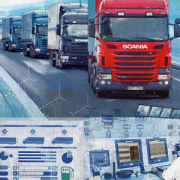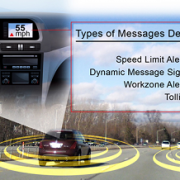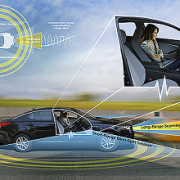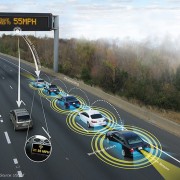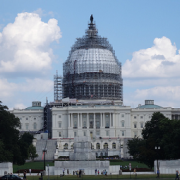Renesas, eTrans Systems Partner Up to Debut Connected Parking App at CES 2017
eTrans Systems
FAIRFAX, Va. — eTrans Systems, a leading developer of software solutions for connected and automated vehicles, today announced their collaboration with semiconductor solutions provider Renesas Electronics America Inc. by delivering a parking availability solution using dedicated short range communications (DSRC) to help enable both autonomous and driver-based vehicles to easily find open parking spots.
This technology will be showcased on Renesas’ automotive fleet of vehicles during CES 2017 (Consumer Electronics Show). This collaboration brings together the expertise of the world’s leading automotive semiconductor provider along with an innovative startup company specifically focused on Connected and Autonomous Vehicle (CAV) technology solutions.
Why is this technology important?
In cities throughout the world, parking is a major issue. It has been estimated that upwards of 30 percent of urban drivers are at any one time looking for available parking. This is a tremendous waste of both time and fuel. eTrans’ new DSRC Parking Solution can help to eliminate this waste.
How does the DSRC Parking Solution app work?
Sensors in the parking lot can detect the availability of open spaces. When spots are available, the sensors notify the DSRC Road Side Unit (RSU), which in turn broadcasts out availability. On-Board Units (OBUs) in the car receive the messages and then notify either the driver or the vehicle’s autonomous driving system.
“Renesas is very excited about this application, “ said Amrit Vivekanand, vice president, of Renesas Electronics America’s automotive business unit. ” We see this as an interesting use of our automobile technology in the Vehicle to Infrastructure (V2I) market, which is a market that Renesas is looking to further expand into.”
eTrans representatives said they look forward to try and solve the world’s parking woes together with Renesas.
“At eTrans, we see the DSRC Parking Solution as the next major piece in our Vehicle to Infrastructure application suite,” said John Estrada, CEO of eTrans Systems. “It provides an additional benefit from Connected Vehicle technology and is the foundation for solving a major urban problem.”
eTrans and Renesas plan to unveil this solution at CES 2017. For more details on the demonstration, contact John Estrada at jestrada@eTransSystems.com.
About eTrans Systems
eTrans Systems specializes in the development and deployment of autonomous and connected vehicle systems. eTrans solutions include safety applications, mobility applications and vehicle management applications. eTrans clients include automobile OEMs, tier-1 auto suppliers and state and local governments.

